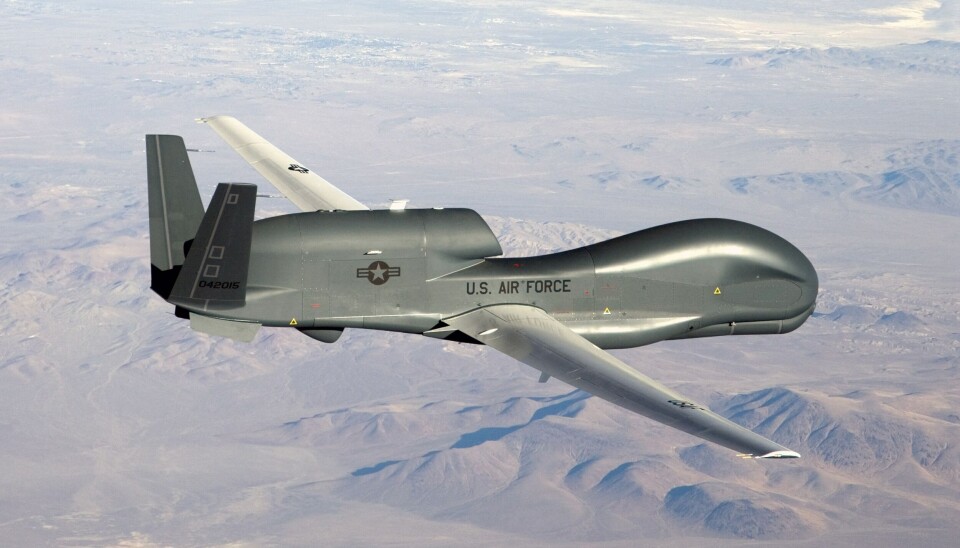
First time Global Hawk makes Finnmark flyover
The remotely-operated surveillance drone entered Norwegian airspace from Finnish Lapland and continued out over the Barents Sea to the west of North Cape. A major air- and naval show of power takes place outside Andøya Wednesday afternoon.
The large surveillance drone came from Sicily and was in the morning on Wednesday flying back and forth over Finland before it continued north across the border into Norway at around 14.25 local time.
Flying at high-altitude (53,000 feet), the remotely-piloted aircraft collects data to inform NATO and U.S. commanders about movements of interest. The Global Hawk flew all along Europe’s eastern border to Ukraine, Belarus and Russia before it crossed the Arctic Circle.
Defense analyst with the Norwegian Institute of International Affairs (NUPI), Per Erik Solli, tells to the Barents Observer that this is the first time a Global Hawk has used the corridor from northern Finland into Norway.
"This flight corridor was established after Norway changed its regime for allied aircrafts into Finnmark after Finland joined NATO," Solli explains.
The first foreign military planes to fly the same route came last year when British and American Rivet Joint surveillance aircraft flew missions to international airspace outside the Kola Peninsula.

The highly unusual move into airspace over Finnmark comes after days of high U.S. and Norwegian navy and air force activity in northern regions.
On Tuesday, several P-8 Poseidon submarine hunters were over the Norwegian- and Barents Seas, as well as a U.S. Air Force WC-135R. The latter is known as the "nuke-sniffer" because it collects air samples in real-time to see if there is any radioactivity.
Last Friday, a fleet of Norwegian and U.S. warships made a show of power under the cliffs of North Cape.
The vessels, consisting of two destroyers, a supply ship and a frigate, were part of the ongoing training with the USS Gerald R Ford strike group taking place northwest of the Lofoten archipelago in the Norwegian Sea.
Since Russia's all-out war against Ukraine, the Global Hawk has become a frequently used tool to conduct surveillance over the Black Sea and central Europe. In recent months, the drone has operated in Finnish airspace.
Flying over Norway's Finnmark region, however, is a first. At least for public domains.
Spokesperson Vegard Norstad Finberg with the Norwegian Joint Headquarters said in an email to the Barents Observer that the Global Hawk has been in Norwegian airspace previously, but it is not known to have made flights over Finnmark - the region bordering Russia's military stronghold, the Kola Peninsula.
The Global Hawk continued around northern Norway to the waters where the U.S. carrier group is operating. Here, two large U.S. Air Force KC-135R Stratotankers were serving other aircraft, likely fighter jets, with mid-air refuelling.
Both tankers took off from Bodø.
After a few hours of circling over the Norwegian Sea, the U.S. Global Hawk returned north to the Barents Sea towards the Porsanger fjord, east of North Cape, from where it flew south across Finnmark again and into Finland on the route back to Sicily in Italy.
















